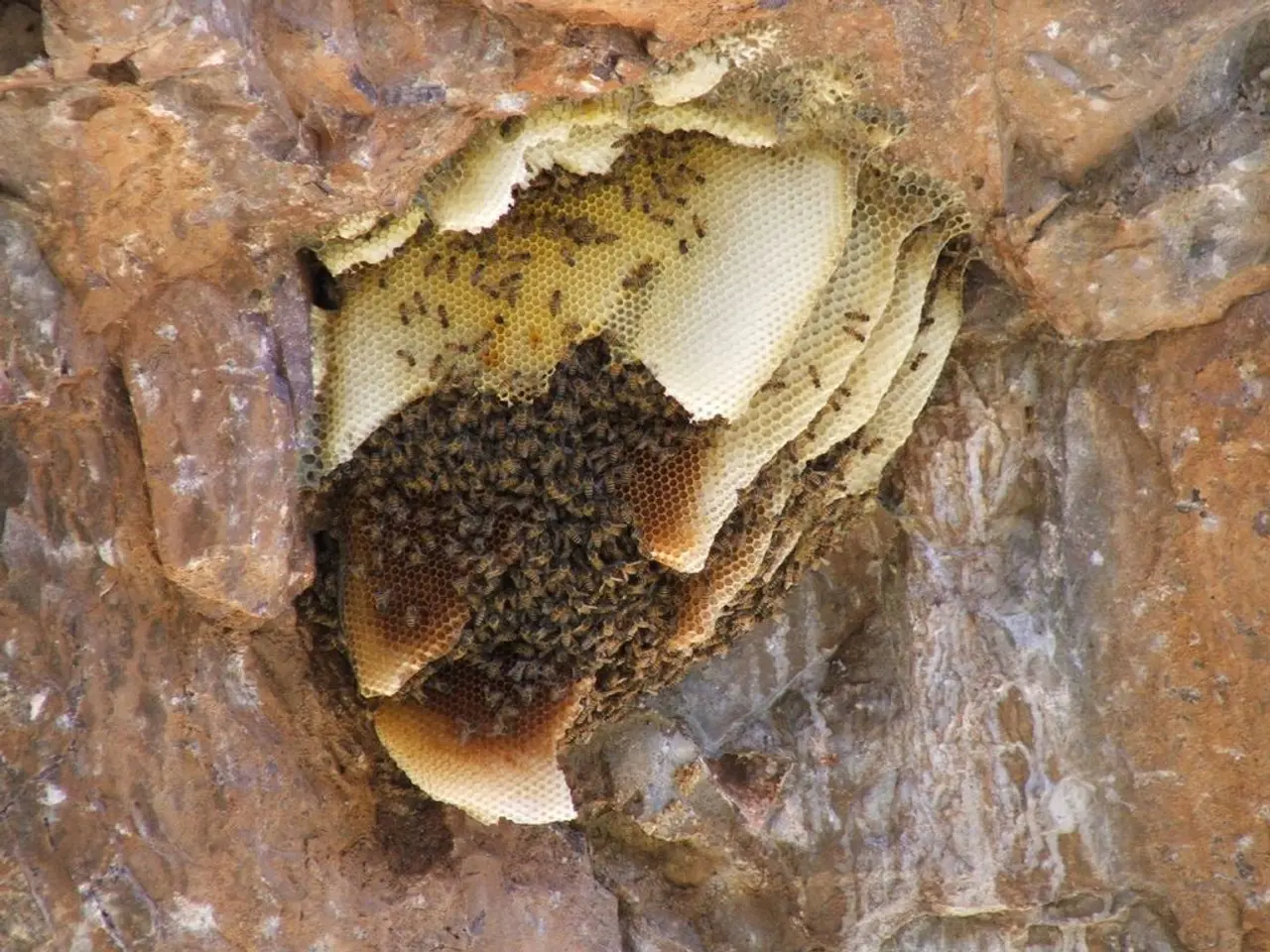Differentiating between Hives and Rashes: Visual Comparison, Distinguishing Signs, and Symptomatic Analysis
In our daily lives, various skin conditions can arise, causing discomfort and concern. Here's a guide to help you identify and understand common skin problems: hives, dermatitis, heat rash, insect bites, and cellulitis.
Hives (Urticaria)
Hives present as intensely itchy, raised welts or wheals that can vary rapidly in shape and size, often appearing and disappearing within hours. They are caused by allergic reactions or immune triggers and usually resolve without lasting marks.
Dermatitis
Dermatitis, including eczema and contact dermatitis, shows as red, inflamed, dry, and itchy patches or plaques often with scaling or leathery thickening, which tends to be more persistent. Contact dermatitis appears where skin touches irritants/allergens, while atopic dermatitis is more chronic and often linked with other allergies.
Heat Rash (Miliaria)
Heat rash is characterized by small, red, itchy bumps or blisters caused by sweat duct blockage, typically occurring in hot, humid conditions and areas where sweat accumulates (folds, neck, chest). It often appears as a fine red rash with tiny bumps.
Insect Bites
Insect bites usually cause localized red bumps or swelling that are itchy and sometimes painful. The bites may include a central puncture mark. Mild allergic reactions cause redness and swelling larger than the bite itself. Secondary infection risk increases with scratching.
Cellulitis
Cellulitis is a bacterial skin infection presenting as a painful, red, swollen, and warm area that often spreads progressively. The skin may appear glossy and tight. Fever, chills, and systemic symptoms are common. Unlike the others, cellulitis requires antibiotic treatment and can become serious if untreated.
Summary Table
| Condition | Appearance | Key Features | Cause/Trigger | Duration / Course | |---------------|--------------------------------------------|------------------------------------------------------------------|----------------------------------------|----------------------------| | Hives | Raised, itchy, red or skin-colored welts | Shape and size change rapidly, comes and goes within hours | Allergic reaction, immune triggers | Hours to a day | | Dermatitis| Red, inflamed, dry, scaly or leathery patches | Persistent, may thicken skin, often in specific areas | Irritants/allergens, chronic inflammation | Days to weeks or chronic | | Heat rash | Small red bumps or blisters | Occurs in sweat-prone areas, itchy, from blocked sweat ducts | Heat, sweat retention | Days, resolves with cooling | | Insect bites| Localized red bump, possible puncture mark| Itchy and sometimes painful, swelling with possible allergic reaction | Insect saliva venom | Days, resolves usually | | Cellulitis| Red, swollen, warm, painful area | Spreading redness, warmth, systemic signs (fever, chills) | Bacterial infection of skin | Progressive, needs treatment|
These clinical differences help in identifying each condition. When in doubt—especially if redness spreads, pain worsens, or systemic symptoms occur—medical evaluation is needed to rule out serious infections like cellulitis.
Treatment options for hives include cool compresses, antihistamines, oral corticosteroids, second-generation antihistamines, monoclonal antibodies such as omalizumab, and ciclosporin. Dermatitis, or eczema, is inflammation of the skin that causes a dry, scaly, itchy rash.
Read also:
- Exploring Treatment Methods for Bladder Cancer: A Comprehensive Look
- In Russia, there has been a proposal to boost the birth rate
- Wealthier Americans are expected to receive the greatest benefits from Trump's tax legislation, while lower-income citizens may see a decrease, according to the Congressional Budget Office.
- Lifting of Restriction: Water Sample Shows No Presence of Harmful Germs - Safe to Bathe Again






